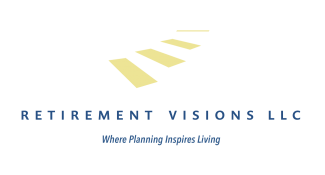
Small-Business Retirement Plans: A Quick Guide
A surprising number of small-business owners fail to offer retirement plans, often because they don't understand all the options available. Here's an overview of all the major features of each kind of retirement plan—including SIMPLE, SEP, 401(k), defined-benefit, and profit-sharing plans—that you can share with clients.
The vast majority of businesses in the U.S. employ fewer than 100 workers, yet these employees have less access to retirement planning vehicles and other benefits than those who work for larger companies. That means the 35% of Americans who are employed by small businesses don't have the same opportunity to save for retirement via tax-advantaged vehicles that many others have.
In fact, a survey of small-business owners by Bank of America Merrill Lynch found that only 33% of all small businesses offer retirement plans, even though 75% of those businesses feel a sense of responsibility toward their employees. It's likely that those businesses would be more attractive to potential employees if they offered a retirement plan. And many small-business owners may not realize that retirement plans have become more affordable in recent years as more options have become available.
Overview of small-business retirement plans
In helping small-business owners choose a plan that is right for them, you need to have a working familiarity with the different kinds of retirement options. Below, we've compiled the major features of each type of plan, along with an overview of benefits.
Simplified Employee Pension (SEP)
An SEP allows small-business owners to set up a type of IRA for themselves and each of their employees. Owners must contribute a uniform percentage of pay for each employee, although they do not have to make contributions every year. SEPs have low start-up and operating costs and can be established using a two-page form. The employer can also decide how much to put into an SEP each year, offering flexibility when business conditions vary.
|
Table 1: Simplified Employee Pensions (SEP) |
|
|
Employer eligibility |
Any employer with one or more employees including sole proprietors, partnerships, corporations, and S corporations |
|
Employer's role |
Set up plan by selecting a plan sponsor and completing IRS Form 5305-SEP. No annual filing requirements for employer. |
|
Contributors to |
Employer contributions only; 100% tax-deductible |
|
Date to set up new plan |
By due date of tax return (including extensions) |
|
Date contributions are due |
Due date of tax return (including extensions) |
|
Maximum annual contribution (per participant) |
Up to 25% of W-2 wages or 20% of net adjusted self-employment income for a maximum of $52,000 in 2014 |
|
Contributor's options |
Employer can decide whether to make contributions year-to-year |
|
Minimum employee coverage requirements |
Must be offered to all employees who are at least 21 years of age, were employed by the employer for three of the last five years and had earned income of more than $550 |
|
Vesting |
Contributions are immediately 100% vested |
|
Participant loans |
Not allowed |
|
Withdrawals |
Withdrawals permitted anytime subject to federal income taxes; early withdrawals subject to tax penalty |
Sources: "SEP Retirement Plans for Small Businesses," Department of Labor, and "Retirement Plans for Small Business," IRS Publication 560
SIMPLE
SIMPLE (Savings Incentive Match Programs for Employees of Small Employers) plans are usually set up as IRAs. They are easy to establish and inexpensive to administer. Employer contributions are flexible: they can either match employee contributions dollar for dollar—up to 3% of an employee's compensation—or make a fixed contribution of 2% of compensation for all eligible employees.
|
Table 2: SIMPLE Plans |
|
|
Key advantage |
Salary reduction plan with little administrative paperwork |
|
Tax Credit |
Employers who set up a new plan may be eligible for a tax credit of up to $500 a year for the first three years to help defray the costs of starting the plan. File IRS Form 8881. |
|
Employer eligibility |
Any employer with 100 or fewer employees that does not currently maintain another retirement plan |
|
Employer's role |
Set up plan by completing IRS Form 5304-SIMPLE or IRS Form 5305-SIMPLE. No annual filing requirements for employer. Bank or financial institution processes most of the paperwork. |
|
Contributors to |
Employee salary reduction contributions and employer contributions |
|
Date to set up new plan |
Generally by 10/1 of the year the plan is established |
|
Date contributions are due |
Due date of tax return, including extensions; elective deferrals by participants due 30 days after the last day of the month for which contributions are made |
|
Maximum annual contribution (per participant) |
Employee: Up to $12,000 in 2014 ($14,500 if age 50+) |
|
Contributor's options |
Employee can decide how much to contribute. Employer must make matching contributions or contribute 2% of each employee's compensation (up to $260,000 of compensation in 2014). |
|
Minimum employee coverage requirements |
Must be offered to all employees who have earned income of at least $5,000 in any prior two years and are reasonably expected to earn at least $5,000 in the current year |
|
Vesting |
Employer and employee contributions are immediately vested 100% |
|
Participant loans |
None allowed |
|
Withdrawals |
Can occur any time after contribution is made, but 25% penalty if withdrawal occurs during two-year period beginning on the first day of participation |
Sources: "SIMPLE IRA Plans for Small Businesses," Department of Labor, "Retirement Plans for Small Business," IRS Publication 560; and "SIMPLE IRA Plans for Small Businesses," IRS Publication 4334
401(k)
401(k) plans—both traditional and Roth—have become a widely accepted retirement savings vehicle for small businesses. They can vary significantly in their complexity. However, many financial institutions and other providers offer prototype 401(k) plans, which can greatly lessen the administrative burden on individual employers.
|
Table 3: 401(k) Plans |
|
|
Key advantage |
Permits higher level of salary deferrals by employees |
|
Employer eligibility |
Any employer with one or more employees |
|
Employer's role |
No model form available. Advice from financial institution or employee benefit advisor may be necessary. Annual filing of Form 5500 is required. Also may require annual nondiscrimination testing to ensure plan does not discriminate in favor of highly compensated employees. |
|
Contributors to |
Employee salary reduction contributions and/or employer contributions |
|
Date to set up new plan |
Last day of the fiscal year |
|
Maximum annual contribution (per participant) |
Employee: $17,500 ($23,000 for participants 50+) in 2014 |
|
Contributor's options |
Employee can elect how much to contribute pursuant to a salary reduction agreement. The employee can make additional contributions, including possible matching contributions, as set by plan terms. |
|
Minimum employee coverage requirements |
Generally, must be offered to all employees at least 21 years of age who have completed a year of service with the employer |
|
Vesting |
Employee salary deferrals are immediately 100% vested. Employer contributions may vest over time according to plan terms. |
|
Participant loans |
Plan may permit loans and hardship withdrawals. |
|
Withdrawals |
Withdrawals permitted after a specified event occurs (e.g., retirement, plan termination). Early withdrawals subject to tax penalty. |
Source: "401(k) Plans for Small Businesses," Department of Labor, "Retirement Plans for Small Business," IRS, Publication 560
Profit-sharing
Employer contributions to a profit-sharing plan are discretionary. Depending on the plan terms, there is often no set amount that an employer needs to contribute each year. As with 401(k) plans, profit-sharing plans can vary greatly in their complexity, and prototype plans offered by financial institutions can reduce the administrative burden on individual employers.
|
Table 4: Profit-Sharing Plans |
|
|
Key advantage |
Permits employer to make large contributions for employees |
|
Employer eligibility |
Any employer with one or more employees |
|
Employer's role |
No model form available. Advice from financial institution or employee benefit advisor may be necessary. Annual filing of Form 5500 is required. |
|
Contributors to |
Annual employer contribution is discretionary. |
|
Date to set up new plan |
By year end (generally Dec. 31) |
|
Date contributions are due |
Due date of tax return, including extensions |
|
Maximum annual contribution (per participant) |
The lesser of 100% of compensation or $52,000 in 2014. Employer can deduct amounts that do not exceed 25% of aggregate compensation for all participants. |
|
Contributor's options |
Employer makes contribution as set by plan terms. Employee contributions, if allowed, are set by plan terms. |
|
Minimum employee coverage requirements |
Generally, must be offered to all employees at least 21 years of age who worked at least 1,000 hours in a previous year. |
|
Vesting |
Employee salary reduction contributions and most employer contributions are immediately 100% vested. Employer contributions may vest over time according to plan terms (Five-year cliff, or three-to-seven-year graded, or two-to-six-year graded if top-heavy) |
|
Participant loans |
Plan may permit loans. |
|
Withdrawals |
Withdrawals permitted after a specified event occurs (e.g., retirement, plan termination). Early withdrawals subject to tax penalty. |
Sources: "Profit-Sharing Plans for Small Businesses," Department of Labor; "Retirement Plans for Small Business," IRS Publication 560; and "Choosing a Retirement Plan: Profit Sharing Plan," IRS
Defined benefit
Defined benefit plans provide a fixed, pre-established benefit for employees. This traditional type of pension plan is often viewed as having more value by employees and may provide a greater benefit at retirement than any other type of plan. However, defined benefit plans are more complex and therefore costlier to establish and maintain than other types of plans.
|
Table 5: Defined Benefit Plans |
|
|
Key advantage |
Provides a fixed, pre-established benefit for employees; allows higher tax-deductible contribution for older employees |
|
Employer eligibility |
Any employer with one or more employees |
|
Employer's role |
No model form available. Advice from financial institution or employee benefit advisor may be necessary. Annual filing of Form 5500 is required. An actuary must determine annual contributions. |
|
Contributors to |
Primarily funded by employer |
|
Maximum annual contribution (per participant) |
Actuarially determined |
|
Maximum annual benefit |
The maximum annual benefit at retirement is the lesser of $210,000 or 100% of final average pay |
|
Contributor's options |
Employer generally required to make contribution as set by plan terms |
|
Minimum employee coverage requirements |
Generally, must be offered to all employees at least 21 years of age who worked at least 1,000 hours in a previous year |
|
Vesting |
Right to benefits may vest over time according to plan terms |
|
Participant loans |
Plan may permit loans. |
|
Withdrawals |
Payment of benefits after a specified event occurs (e.g., retirement, plan termination). Early withdrawals subject to penalty. |
Sources: "Choosing a Retirement Solution for Your Small Business," Department of Labor, The IRS Retirement Plan Navigator: Defined Benefit Plan 2013.
A final word
Of all the retirement planning vehicles available for small-business owners, SEP and SIMPLE plans offer the easiest solutions for those looking to quickly, inexpensively, and easily start a retirement plan for themselves and their employees. Both 401(k) and defined benefit plans are more complex, but also have advantages for employers and employees.
Be aware that you may encounter a long sales cycle with these plans. Because of their complexity and long-term nature (employers should be prepared to keep them going indefinitely), small-business owners are unlikely to sign up on the first appointment. And remember that these entrepreneurs wear several hats and will naturally be more focused on running the business than spending a lot of time pondering the nuances of retirement plans. But keep at it. Studies have shown that although most new plan sponsors approached the vendor rather than vice versa, they may not have approached the provider if the groundwork had not been laid previously by other vendors. In other words, retirement plans are sold, not bought.

